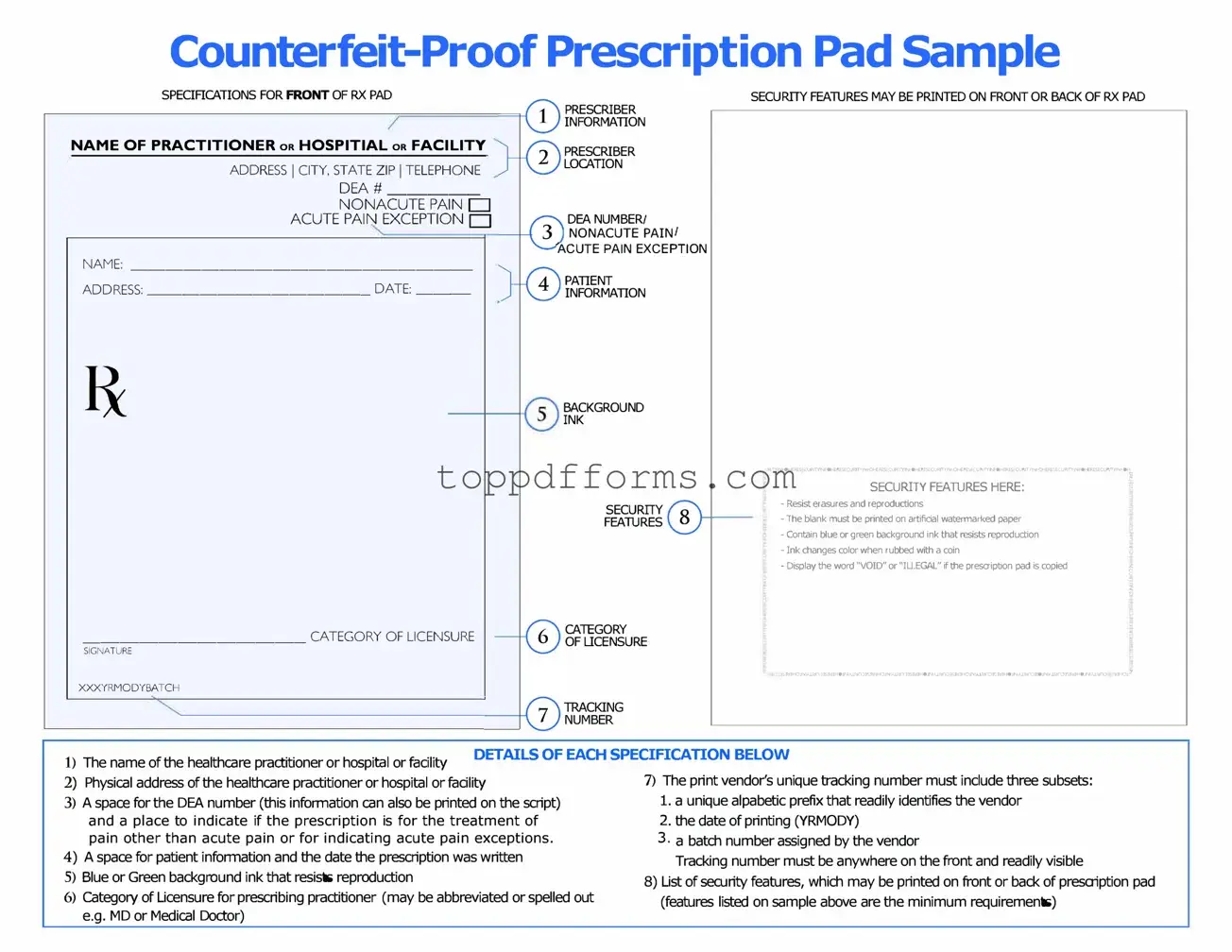What is a Prescription Pad form?
A Prescription Pad form is a document used by healthcare providers to prescribe medications to patients. It includes essential information such as the patient's name, the medication prescribed, dosage, and instructions for use. This form serves as a legal record of the prescription and helps ensure that patients receive the correct medications safely.
Who can issue a Prescription Pad form?
Only licensed healthcare professionals, such as doctors, nurse practitioners, and physician assistants, can issue a Prescription Pad form. These providers have the training and authority to assess patient needs and determine appropriate medications. It's crucial that only qualified individuals fill out and sign these forms to maintain patient safety and comply with legal regulations.
What information is required on a Prescription Pad form?
A Prescription Pad form typically requires several key pieces of information. This includes the patient's full name, date of birth, and contact information. The healthcare provider must also include the medication name, dosage, frequency, and any specific instructions. Additionally, the provider's name, signature, and contact information are necessary for verification purposes.
How should I fill out a Prescription Pad form?
When filling out a Prescription Pad form, clarity is essential. Write legibly and use standard abbreviations to avoid confusion. Double-check that all required information is included and accurate. If there are any special instructions, make sure they are clearly stated. Remember, this form is a vital communication tool between you and the pharmacy.
Can a Prescription Pad form be altered or changed?
Altering a Prescription Pad form is generally not allowed. Changes can lead to misunderstandings and potential harm to patients. If a mistake is made, the best practice is to void the incorrect form and issue a new one. This ensures that the prescription remains clear and legally valid.
What should I do if I lose a Prescription Pad form?
If a Prescription Pad form is lost, it’s important to act quickly. Notify the relevant authorities, such as your healthcare facility or licensing board, to report the loss. They may have specific procedures to follow. Taking prompt action helps prevent unauthorized use of the prescription and protects both the provider and the patient.
How long is a Prescription Pad form valid?
The validity of a Prescription Pad form can vary based on state regulations and the type of medication prescribed. Generally, prescriptions for non-controlled substances may be valid for up to one year, while controlled substances often have stricter limits, usually ranging from a few days to six months. Always check local laws for specific guidelines to ensure compliance.
